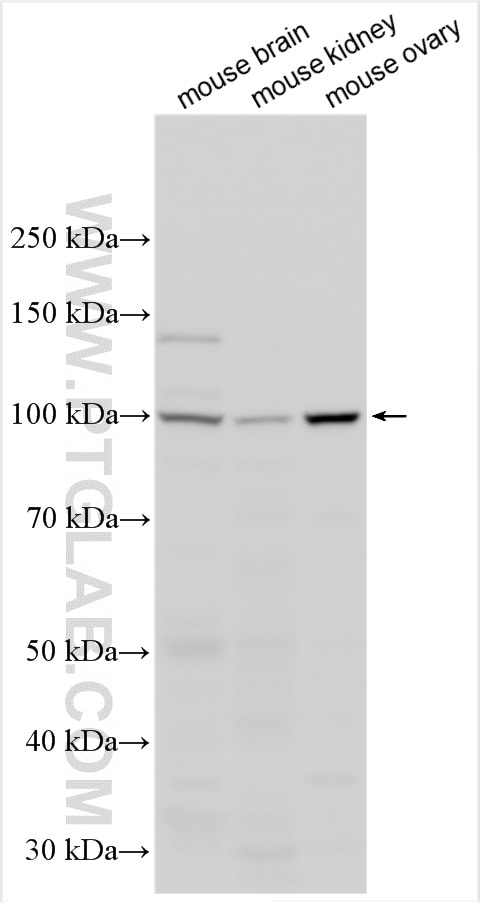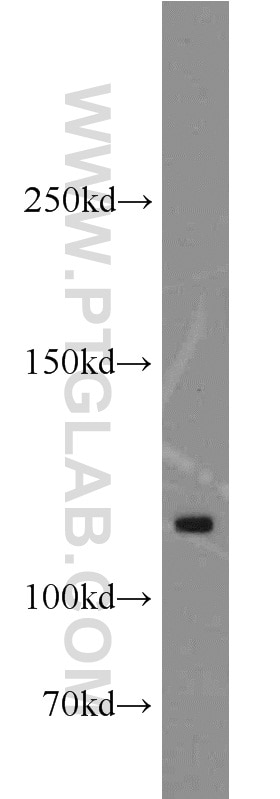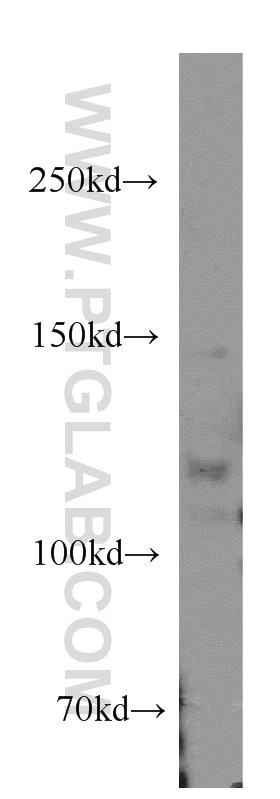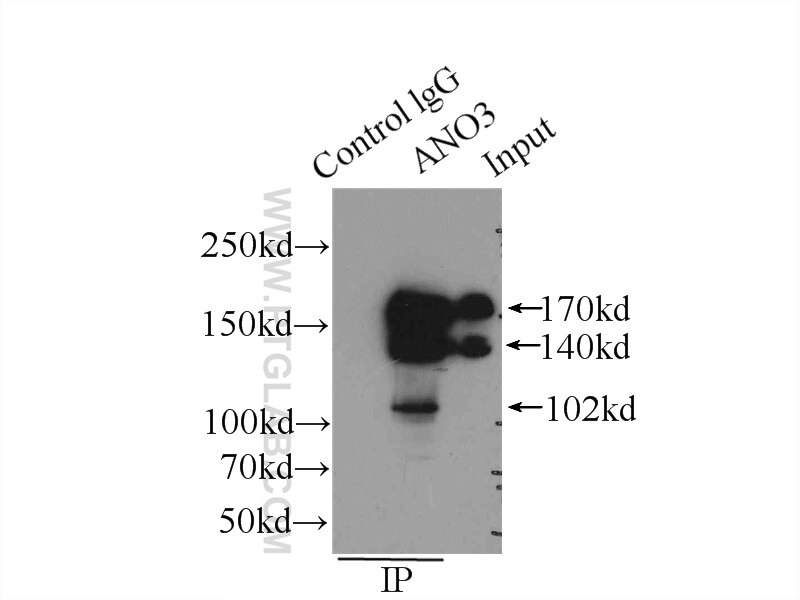Tested Applications
| Positive WB detected in | mouse brain tissue, mouse skin tissue, mouse ovary tissue, mouse kidney tissue |
| Positive IP detected in | mouse testis tissue |
Recommended dilution
| Application | Dilution |
|---|---|
| Western Blot (WB) | WB : 1:500-1:1000 |
| Immunoprecipitation (IP) | IP : 0.5-4.0 ug for 1.0-3.0 mg of total protein lysate |
| It is recommended that this reagent should be titrated in each testing system to obtain optimal results. | |
| Sample-dependent, Check data in validation data gallery. | |
Published Applications
| IF | See 1 publications below |
| IP | See 1 publications below |
Product Information
19489-1-AP targets ANO3 in WB, IF, IP, ELISA applications and shows reactivity with human, mouse samples.
| Tested Reactivity | human, mouse |
| Cited Reactivity | rat |
| Host / Isotype | Rabbit / IgG |
| Class | Polyclonal |
| Type | Antibody |
| Immunogen |
Peptide Predict reactive species |
| Full Name | anoctamin 3 |
| Calculated Molecular Weight | 115 kDa |
| Observed Molecular Weight | 100-115 kDa |
| GenBank Accession Number | NM_031418 |
| Gene Symbol | ANO3 |
| Gene ID (NCBI) | 63982 |
| RRID | AB_10638489 |
| Conjugate | Unconjugated |
| Form | Liquid |
| Purification Method | Antigen affinity purification |
| UNIPROT ID | Q9BYT9 |
| Storage Buffer | PBS with 0.02% sodium azide and 50% glycerol, pH 7.3. |
| Storage Conditions | Store at -20°C. Stable for one year after shipment. Aliquoting is unnecessary for -20oC storage. 20ul sizes contain 0.1% BSA. |
Background Information
ANO3, also named as C11orf25, TMEM16C and GENX-3947, belongs to the anoctamin family. It may act as a calcium-activated chloride channel.
Protocols
| Product Specific Protocols | |
|---|---|
| IP protocol for ANO3 antibody 19489-1-AP | Download protocol |
| WB protocol for ANO3 antibody 19489-1-AP | Download protocol |
| Standard Protocols | |
|---|---|
| Click here to view our Standard Protocols |










